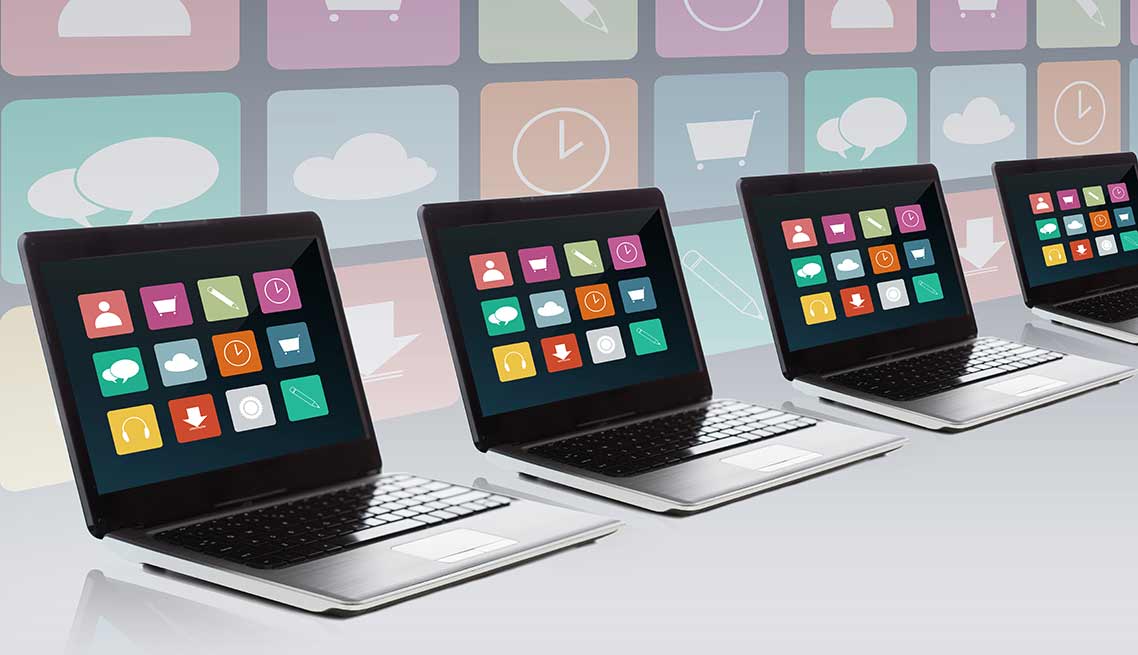
Sysprep Windows 10: Deploying Windows 10 Using Sysprep
Businesses need to replicate similar configurations of the Windows OS for hundreds and even thousands of employees. This can be done by creating a Windows image of a customized installation and deploying it across multiple PCs. But before cloning a Windows installation, any unique identifiers, such as the system ID (SID), must be removed. This is done through the Windows System Preparation Tool, or Sysprep.
Learn how to use Sysprep to deploy multiple Windows 10 desktops and virtual machines the smart way.
What Is Sysprep in Windows 10 Used for?
 For each Windows installation, the OS assigns a unique system or security identifier (SID) to the particular computer. To clone the same Windows OS on multiple computers within your organization, you can create a disk image of the original installation and deploy it to other PCs. But when you create a disk image, identifiers that are unique to each installation, such as the SID and Internet Protocol (IP) address, are replicated as well. This disk image cannot be deployed across other computers operating in your organization’s internal network without causing problems. For example, Windows Server Update Services (WSUS) uses the SID to identify each computer and cannot recognize multiple computers sharing a SID, making it hard for administrators to manage updates and hotfixes.
For each Windows installation, the OS assigns a unique system or security identifier (SID) to the particular computer. To clone the same Windows OS on multiple computers within your organization, you can create a disk image of the original installation and deploy it to other PCs. But when you create a disk image, identifiers that are unique to each installation, such as the SID and Internet Protocol (IP) address, are replicated as well. This disk image cannot be deployed across other computers operating in your organization’s internal network without causing problems. For example, Windows Server Update Services (WSUS) uses the SID to identify each computer and cannot recognize multiple computers sharing a SID, making it hard for administrators to manage updates and hotfixes.
Therefore, before deploying a Windows image on another computer, it must undergo a process called generalization. Generalization means removing any computer-specific information from the image before deploying it to other computers. And that is exactly what you use Sysprep in Windows 10 for. Sysprep is Microsoft’s utility for generalizing a Windows image so that it can be used by multiple PCs simultaneously. It removes SIDs and other PC-specific information and driver cache to create a generic Windows OS image that can be deployed across thousands of PCs. It also enables generating new SIDs and other characteristics so that the Windows image can function on other PCs.
By deploying a single generic image, administrators can save time and conveniently set up and maintain thousands of PCs with similar configurations, business-specific applications and necessary drivers. They can also test the configurations for all employees whenever changes are made through a privileged audit mode. All in all, it can reduce the cost of providing technical support significantly and simplify ongoing maintenance for the IT department.
What Are the Limitations of Windows 10 Sysprep?
Before running Sysprep for Windows 10 installation, you must consider certain limitations. For instance, you can use only the version of Sysprep that comes with the Windows version that needs to be cloned for generalization. And if you upgraded your Windows OS to a newer version, you won’t be able to use Sysprep. Here are some other limitations that the administrators must be aware of:
- If your PC is running multiple OSes, Sysprep must be run separately for each captured image.
- For customized applications to function properly after the capture and deploy process, drive letters must be consistent between the reference PC and the destination PC.
- Running Sysprep may not replicate the server role configurations in the Windows image.
- If you run Sysprep on a New Technology File System (NTFS) partition, you will not be able to read or recover the stored encrypted files.
- Before capturing an image, the Windows installation must have the drivers for plug and play devices such as sound and video cards.
- You can use the Microsoft-Windows-Deployment/Generalize command to prepare a PC for capturing the Windows image, but the RunSynchronous command cannot be used for automating Sysprep.
- If you are on a domain, Sysprep cannot be used. However, it can be used for PCs from a workgroup. Running Sysprep will automatically remove the PC from that domain. But if the domain has a strong password policy, Sysprep keeps that.
- If running Sysprep generates an error, you will have to recapture the image before running Sysprep again.
Finally, administrators must ensure strong passwords for all user accounts. Running Sysprep on a PC with a weak password may disable the user from logging in again.
How Do You Use Sysprep to Create Generic Windows Images?
You can create a generic Windows image through audit mode or through unattend files. You can configure Windows to boot to audit mode instead of the default Out-of-Box-Experience (OOBE). Audit mode enables you to customize the Windows configurations as per the company’s requirements and capture an image to deploy across other computers in the company.
Here’s a step-by-step guide on how to create a generic Windows image using the Sysprep tool:
- Boot your Windows in audit mode. You can either close the System Preparation Tool window that appears or let it be.
- Customize the installation by changing configurations, adding drivers and programs. Just avoid installing applications from the Microsoft store to avoid issues with drive letter inconsistencies between the reference and destination PC.
- Run the Sysprep tool by clicking Generalize, Shutdown and OK in the System Preparation Tool window that appeared right after booting in audit mode. This step will generalize the installation, and the system will shut down.
However, if you had closed the System Preparation Tool window, you can reopen it through the command prompt by typing
%WINDIR%\system32\sysprep\sysprep.exe
Alternatively, you can run:
%WINDIR%\system32\sysprep\sysprep.exe /generalize /shutdown /oobe command
This will generalize and shut down without having to open the window. You can use the /mode:vm option for generalizing a Virtual Hard Drive (VHD) to be deployed on the same Virtual Machine (VM) or hypervisor.
You can now capture your image with DISM. Test the image extensively before deploying it to reference computers.
You can also generalize the image using attend files by adding a few settings:
- You can use the Microsoft-Windows-Deployment/Generalize setting. Then set the mode to OOBE or Audit mode, and set ForceShutdownNow to true to generalize the image automatically.
or
- You can generalize the system and boot it in Audit mode by using the Microsoft-Windows-Deployment/Reseal setting to the oobeSystem configuration pass and then set the mode to Audit.
When your Windows Setup processes the unattend file, it will generalize the installation.
After deploying the generic image to a destination computer, the SID and other erased identifiers must be provided for the OS to function. You can use an answer file to configure unattended Windows Setup settings automatically. An answer file is a list of components and settings that the computer applies to the system when configuration passes run. By using an answer file with the Sysprep command, the computer will automatically enter the computer name, SID, IP address and other necessary parameters specified in the answer file when the Windows image runs for the very first time. You can use the Sysprep/unattend: <file_name> command for specifying a different answer file.
What Are the Advantages and Disadvantages of Using Sysprep?
Using Sysprep to create generic Windows 10 images has its own benefits and disadvantages. Capturing a customized Windows 10 image and deploying it across all devices in an organization can reduce the workload on the IT department considerably. You do not have to configure Windows settings and install security updates separately for each device.
Using answer files with Sysprep can make re-entering the generalized information much faster and easier. Once the Windows image is deployed and boots for the first time, the computer will read and enter the specified information automatically. You can also update the Windows image as needed by changing the configurations and using the deployment tool.
Apart from the limitations discussed earlier, using Sysprep has some other disadvantages as well. For instance, the size of the Windows image is considerably larger than the original Windows 10 installation. You will also have to update the drivers and other programs on the Windows image as newer versions come out.
Simplifying Deployment of Guest Virtual Machines Through Parallels RAS Templates
Parallels® Remote Application Server (RAS) makes it extremely convenient to create Remote Application Server templates to deploy across a large number of virtual machines. Using Parallels RAS templates for Virtual Desktop Infrastructure (VDIs) or Remote Desktop Session Hosts (RDSH), administrators can set up as many guest virtual machines as they need—easily and on the go. All you have to do is prepare the virtual machine by installing Parallels RAS Guest Agent and perform the following steps:
- From the Parallels RAS Console, navigate to Farm> VDI Hosts> RAS Templates, and hit the + button.
- Enter the properties in the Parallels RAS Template Wizard, choose a clone method, and hit Next.
- You can either create the template by using Microsoft Sysprep, or choose RASprep, which is a lighter version of Sysprep. Also, specify other details for guest preparation, and hit Next.
- Choose the license key management type, and hit Next.
You now have a template. You can also choose to test the newly created template through automated VM testing and VM deployment.
Experience how fast and simple it is to deploy similar setups on-demand, multiple times by downloading a 30-day trial of Parallels RAS.
References

